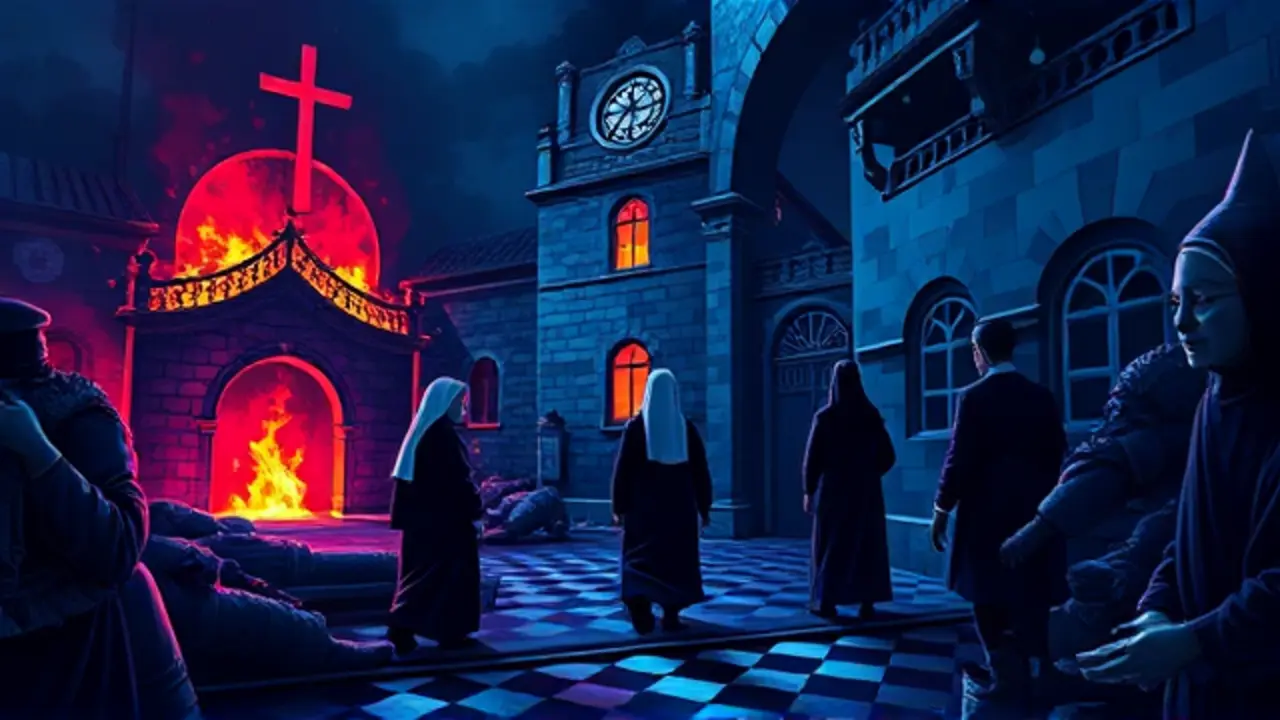Nuns escape historic Italian monastery fire.
The news arrived not as a statistic or a drone’s-eye view of destruction, but as a tremor through a community, a story whispered with relief and heartache in the quiet corridors of faith that remain. The historic Bernaga Monastery, a centuries-old sanctuary carved from Italian stone and devotion, was consumed by a fire so fierce its glow could be seen for miles, a terrible beacon against the night sky.Yet, the true narrative, the one that makes you pause and lean in, isn't found in the charred timbers or the collapsed roof; it’s in the quiet, orderly procession of nuns who escaped, their lives saved by a routine and a resilience that feels almost supernatural in our chaotic world. Speaking with locals in the days that followed, you hear the same refrain, a mixture of awe and profound sorrow.One elderly baker, his hands dusted with flour, described the sisters not as fleeing in panic, but walking, their habits silhouetted against the inferno, carrying what little they could—a sacred text, a small, worn icon, the community ledger. It was a practiced calm, a testament to a life built not on the accumulation of things, but on the preservation of spirit.The monastery itself was more than a building; it was a living archive. Founded in the 14th century, its walls had absorbed the prayers of generations, the scent of incense and old parchment, the quiet industry of illuminating manuscripts and tending herb gardens.Each stone held a memory: the whisper of vespers echoing in the chapel, the soft footfalls on worn staircases, the vibrant frescoes that told stories to those who could not read. To lose such a place is to lose a chapter of human history, a tangible connection to a quieter, more contemplative way of life.The sisters, whose daily existence was a rhythm of prayer and work, have now lost their entire physical world. Their cells, their refectory, their chapel—all gone.Yet, in every conversation, their focus seems to be not on the loss, but on the preservation of their community. They are currently sheltered by a neighboring convent, their routine disrupted but their purpose unbroken.A volunteer from the local parish, her voice thick with emotion, recounted how the Mother Superior’s first concern was for the well-being of her sisters and the safety of the fire crews, a perspective that immediately re-centers the story from one of material destruction to one of human fortitude. This incident forces us to confront the fragility of our shared heritage.Italy is dotted with these ancient religious sites, often underfunded and vulnerable to the ravages of time and accident. The Bernaga fire is not an isolated tragedy; it’s a stark reminder of a continuous, slow-burning crisis in cultural preservation.Experts point to aging electrical systems, a lack of modern fire suppression technology, and the sheer logistical challenge of protecting often-remote structures. The response, however, has illuminated the opposite—the enduring strength of human connection.An impromptu network of support has sprung up, from architects offering pro-bono services for reconstruction to historians scrambling to digitize what records they can from memory and scattered copies. The story of the Bernaga nuns is, in the end, a deeply human one.It’s about what we choose to carry with us when everything else turns to ash. It’s about the invisible architecture of community and faith that no fire can ever truly destroy.As one of the younger nuns softly told a reporter, her gaze steady, ‘The monastery was our home, but our home is also here,’ she said, placing a hand over her heart. ‘That one, the fire cannot touch. ’ The rebuilding will take years and millions of euros, but the foundation, it seems, remains miraculously intact.
Latest News
Hong Kong Policeman Jailed for Sexual Assault
7 days ago0 comments
4 Best Website Builders (2025), Tested and Reviewed
7 days ago0 comments
Nuns escape historic Italian monastery fire.
7 days ago0 comments
6 Best Carpet Cleaners (2025), Tested and Reviewed
7 days ago0 comments
Apple Announces $2 Million Bug Bounty Reward for the Most Dangerous Exploits
7 days ago0 comments
Discord data breach leaks 70,000 user ID photos.
7 days ago0 comments
6 Best Smart Locks (2025) for Front Doors, Slider Doors, and Even Garages
7 days ago0 comments
Discord Data Breach Exposes User ID Photos
7 days ago0 comments
It’s quiet here...Start the conversation by leaving the first comment.
© 2025 Outpoll Service LTD. All rights reserved.
